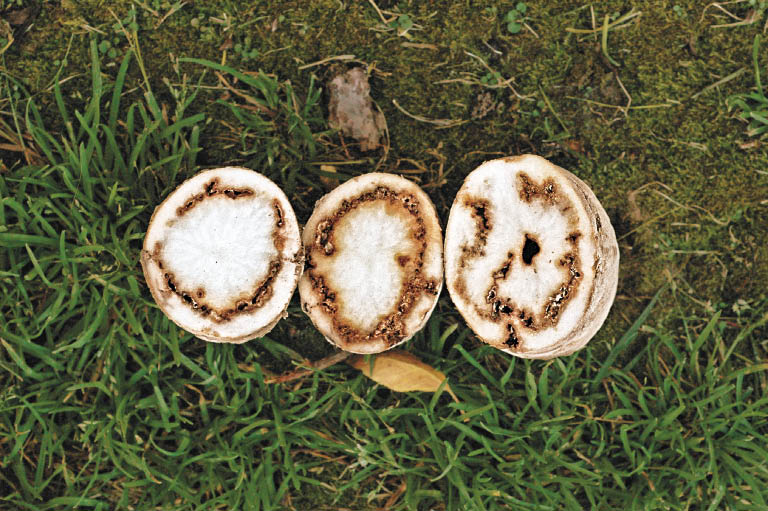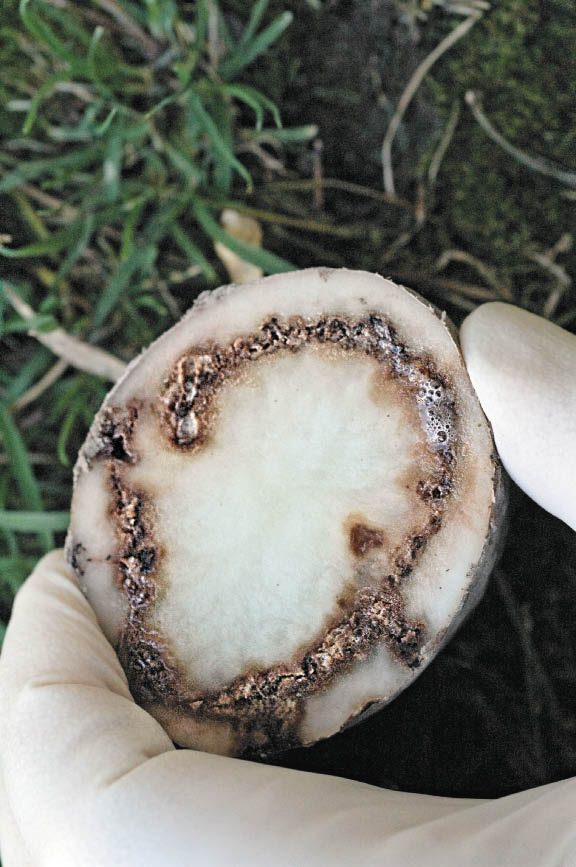

As we roll into August of 2012, your potato crop is probably at its absolute prime with lush, green, upright vines, closed rows and, in all ways, the very picture of health. As the month progresses, however, this scene will inevitably turn toward something quite a bit less idyllic as the crop follows the natural course of events and begins to age.
Senescence is a natural and unavoidable force of nature, especially in annual crops like potato. There are, however, some pretty serious consequences of this natural progression and most of them have to do with potato diseases.
Vigorous, healthy potato foliage is generally pretty resistant to foliar diseases like early blight (caused by the fungus Alternaria solani) but the greater the amount of senescence in the crop the more susceptible the crop is to early blight. Potato scientists often refer to early blight as an "opportunistic" disease because it simply lies in waiting until the potato plants start to age.
This is one of the reasons why the lower leaves on the potato plant, the ones that are the oldest, are first to show symptoms of early blight (Figure 1). The lower portions of the plant are also likely to remain wet from dew, rain or irrigation for longer intervals providing the perfect environment for infection to occur.
Depending on variety, early blight can be managed, to some extent, simply by maintaining proper fertility and irrigation on the crop. Care must be taken, however, to ensure that the crop is not over-fertilized as the season progresses into late summer. Too much fertilizer late in the season can encourage unwanted vine growth at the expense of tuber bulking and may be responsible for reduced yields. This practice adds costs and reduces profits.
Most programs for fungicide application are timed to apply the material under the best conditions for success. In almost every case, this means that applications must begin before disease symptoms become visible. Application before the onset of visible symptoms is an important aspect of early blight control because the disease can be present at shockingly high levels for several days before it produces visible symptoms.
This occurs because all fungal diseases have what we call a "latent period," or a period of time between initial infection and the first appearance of visible symptoms. Forecasting systems for early blight can help growers and managers to time fungicide applications to obtain the most "bank for the buck" by having them in place before infections can occur.
Since most fungicides are applied as protectants and have no activity on fungi that are well-established within the host tissues, a fungicide application made during this latent period might appear to be a failure. In many cases the fungicide is doing its job and preventing more new infections but the level of disease that was already present before the fungicide was applied, shows up after the application. For early blight, the latent period is only about two to three days. Keep in mind also that many of the fungicides we use for early blight management are vulnerable to the development of fungicide resistance. Be sure to follow label instructions and to alternate modes of action.
Many of the new specialty varieties are very susceptible to early blight. Part of the reason for this susceptibility is because many of them mature and senesce early. For these varieties to provide maximum performance, timely fungicide applications are a must. Early blight can also be responsible for causing tuber rot, especially in many of these new specialty varieties (Figure 2). Take care to ensure proper skin set and do your best not to harvest under conditions that are too warm (above 65 degrees F). In storage, provide conditions conducive for suberization and wound healing (temperature of 50 to 55 degrees F, high humidity and high airflow).